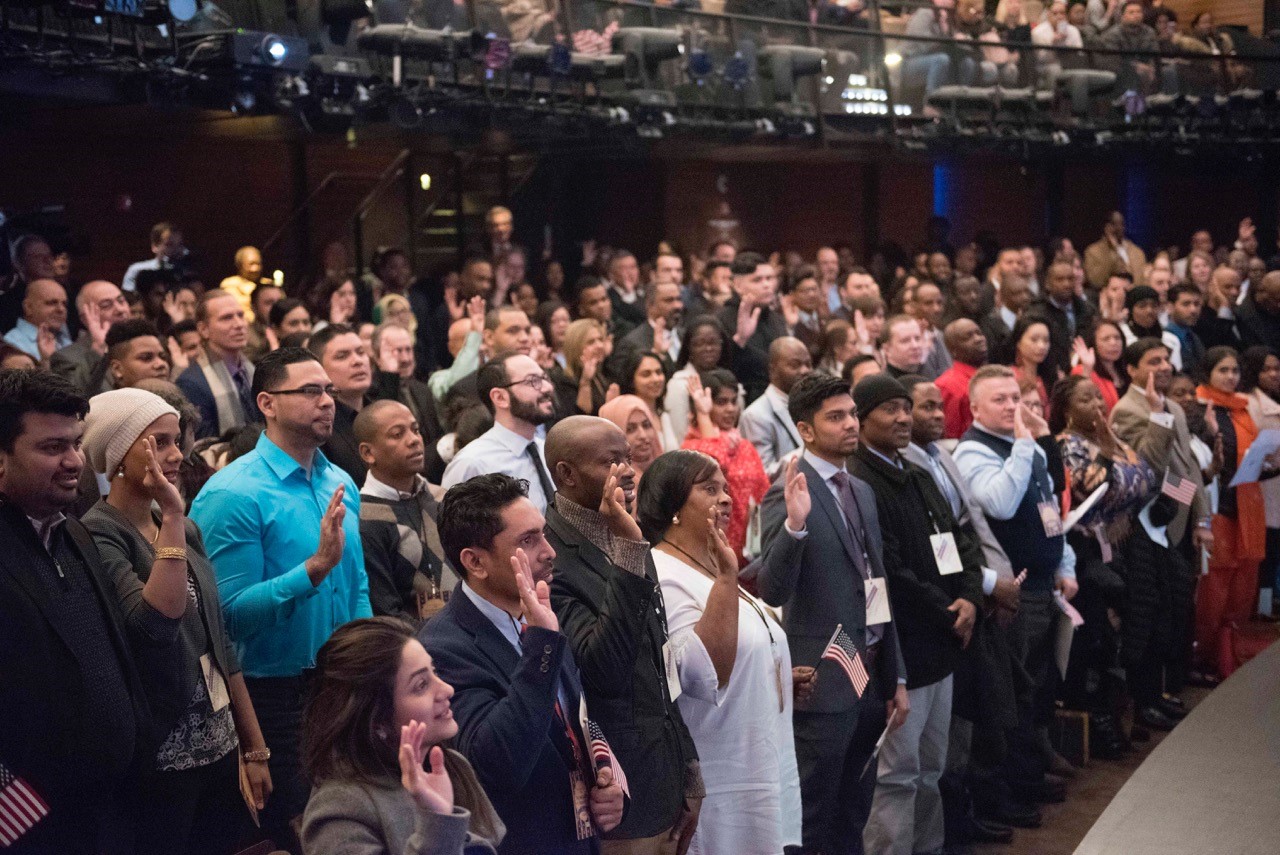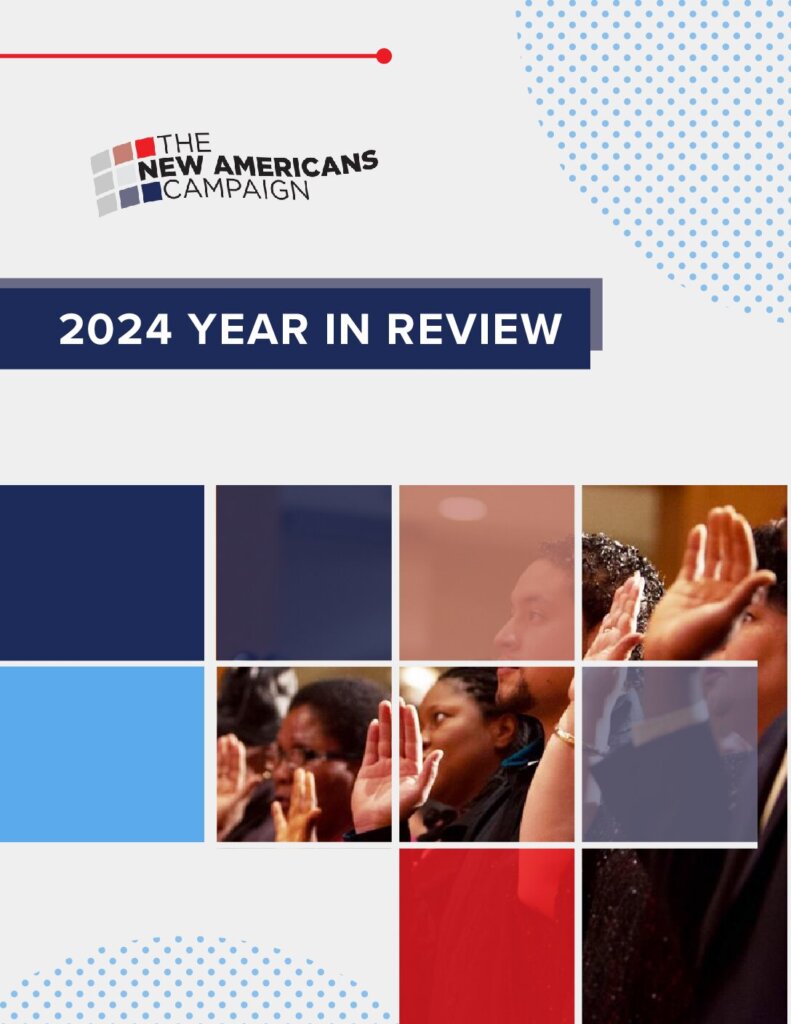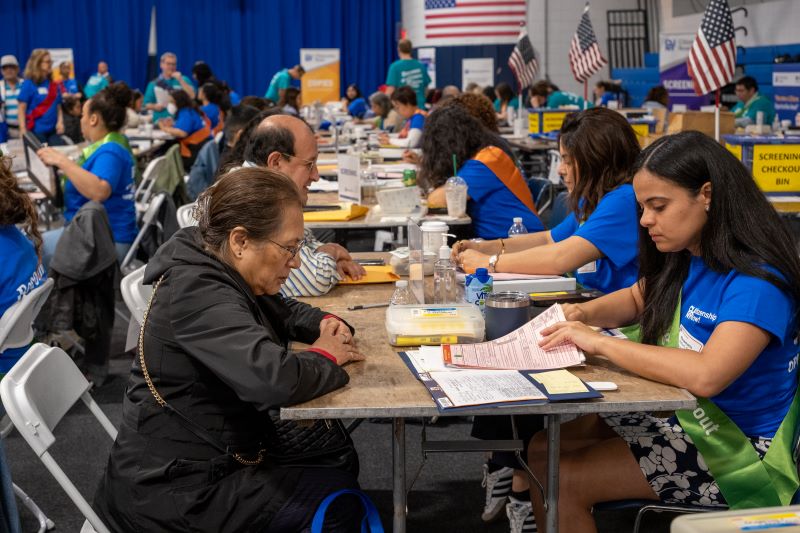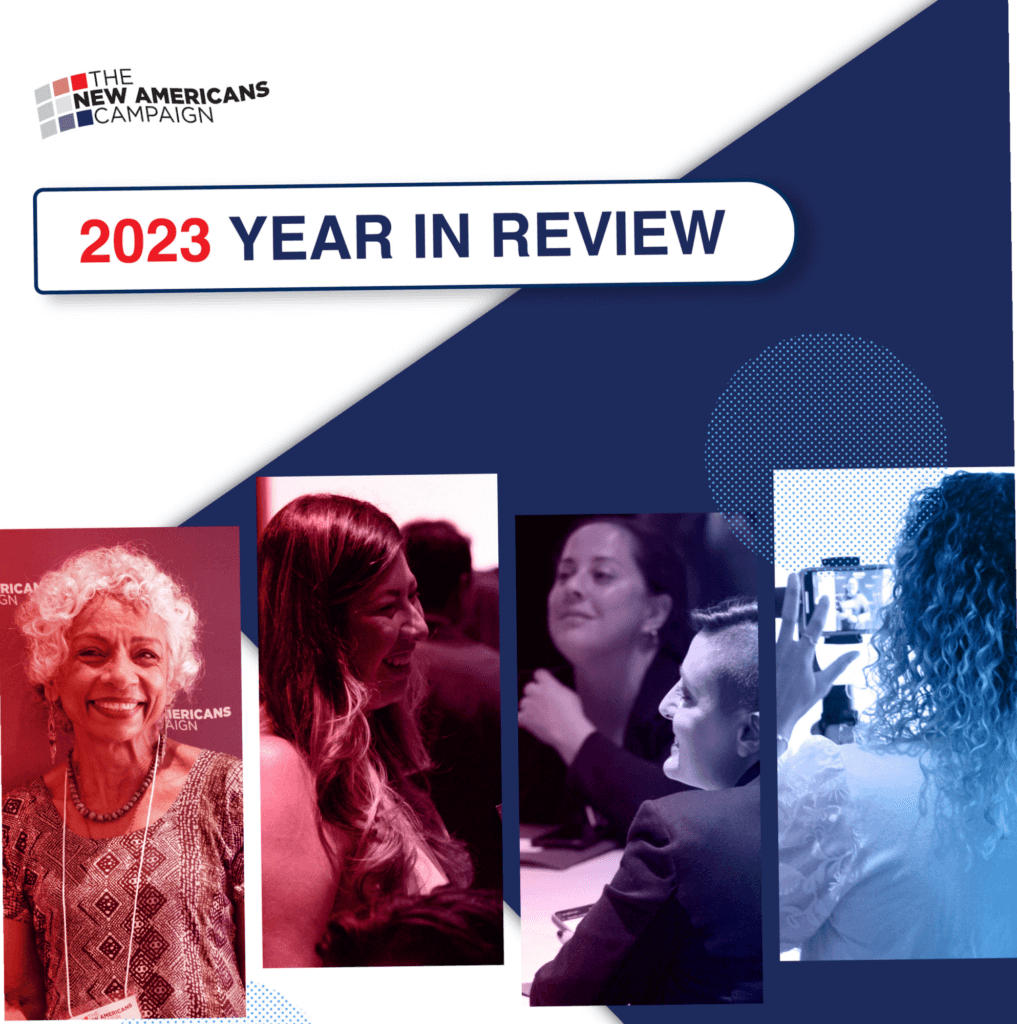Justice Ruth Bader Ginsburg Urges New Citizens to Help America Achieve “A More Perfect Union”

Explore more
Geri Mannion, director of Carnegie Corporation’s Strengthening U.S. Democracy program, shared her experience of the oath ceremony administered by Justice Ruth Bader Ginsburg at the New-York Historical Society on April 10, 2018.
News stories too often cast a dark shadow on the issue of immigration, so it was wonderful to see the media spotlight recently catch a citizenship ceremony in New York City. The inspiring event was held at the New-York Historical Society, on April 10, 2018, and I had the good fortune to be invited. There were 201 candidates, representing 59 different countries — from Albania to Zambia. Excited friends and family members packed into the balconies to cheer them on. Not only was this gathering large and diverse, but there was a surprise guest: Supreme Court Justice Ruth Bader Ginsburg. When the future Americans and their supporters learned that this distinguished jurist was going to administer the citizenship oath, the room erupted in applause. Justice Ginsburg graciously acknowledged the cheers with a smile that beamed.
Justice Ginsburg offered her services after reading an article in the New York Times about the New-York Historical Society’s Citizenship Project. Using art and artifacts from the museum’s collections, the program has developed an innovative way to make U.S. history and civics more concrete for lawful permanent residents who are studying for the citizenship test. Justice Ginsburg thought the Citizenship Project was “a grand idea,” and sent a letter offering to participate in a naturalization ceremony when she was in New York City. I am impressed that a sitting Supreme Court justice thought this was an important thing to do. Above all, Justice Ginsburg was cognizant of what everyone gathered before her had gone through to make it to that day, and she wanted to recognize their achievement.
Justice Ginsburg made it clear that the immigration story is also her personal story. She spoke about how her maternal grandparents came through Ellis Island four months before her mother was born, and how her father came to New York “at age 13 with no fortune and speaking no English.” She appreciates the leap of faith that people take when they leave everything behind to come to a new country. “We are a nation made strong by people like you,” she told them, “people who have traveled long distances, overcome great obstacles, and made tremendous sacrifices all to provide a better life for themselves and their families.”
As I listened, I felt Justice Ginsburg was acknowledging my story too. I am a naturalized citizen. And whenever I attend a citizenship ceremony, especially when couples take the oath together, I am reminded of my own Irish-born parents, who became citizens in 1965. They brought my sister and me with them to this country. Because the two of us were under 18 when our parents naturalized, both of us got what is called “derived citizenship.” At 18 I took the oath of allegiance myself. The citizenship test is not easy. I am confident that many Americans born in the U.S. would not pass it. There are 100 questions requiring that you have mastered many facts. For example, how many senators and how many representatives are there in Congress? Or the test might ask you to describe our democracy. I never had to take the citizenship test, but I remember my parents, especially my mother, studying hard for the test. She worried the entire time that my father would pass, but that she would not. My mother always remembered the question she missed. It was, ironically: “How many justices are there on the Supreme Court?”
After the public ceremony at the New-York Historical Society, I was invited to a private meeting, which was joined by Justice Ginsburg and the founders and fellows of the Immigrant Justice Corps (IJC). A grantee of Carnegie Corporation of New York, the IJC recruits young lawyers and recent college graduates, granting them 2-year positions as a justice fellow or a community fellow. Placed with organizations in New York, New Jersey, Connecticut, and Texas, IJC fellows provide legal services to immigrants. Judge Robert Katzmann, chief judge of the U.S. Court of Appeals for the Second Circuit, founded this remarkable program, because he saw — from the bench — that many immigrants have no legal representation. Unless it is a criminal case, many immigrants have no access to an attorney — and Judge Katzmann wanted to fill that gap.
At Carnegie Corporation we are very interested in trying to address such gaps and to make connections. That’s why I encouraged the New-York Historical Society to connect with our grantee, the New Americans Campaign (NAC). The New Americans Campaign, which is overseen by the Immigrant Legal Resource Center in San Francisco, is a national network of immigration organizations, legal services providers, faith-based organizations, immigrant rights groups, foundations, and community leaders. The NAC works very hard to connect lawful permanent residents, who want to become U.S. citizens, with trustworthy advice and legal assistance. In this way, a very local program, like the New-York Historical Society’s Citizenship Project, can learn from a growing network of organizations across the country that support naturalization efforts — and vice versa. Last February, at the NAC national conference in Miami, more than 300 people, all devoted to helping people navigate the naturalization process, came from across the country to learn from one another and to share tools and best practices. We are delighted that over the last several years these disparate groups have truly joined together to create a united and supportive family of organizations.
Naturalization is not a simple process. People have to pass the test. They must be able to speak adequate English. They sit for an interview and undergo an extensive background check. The financial costs can also be substantial. I see how people, often with few resources, struggle in their journey to become American citizens. Consequently, every citizenship ceremony represents much more than a mere formality. Every oath taking is the culmination of long-held hopes and dreams — and plenty of hard work. But it is also a beginning, and I hope everyone takes what Justice Ginsburg said to heart. She spoke of the importance of our national creed — E Pluribus Unum (out of many, one). And she told everyone at the formal ceremony, “As new, well-informed citizens, you will play a vital part in that endeavor by first and foremost voting in elections, serving on juries, and engaging in civic discourse.” Justice Ginsburg’s words were a heartfelt reminder that becoming a citizen of the United States is about the responsibilities of citizenship, as well as the rewards.
This article was originally published at Carnegie.org



